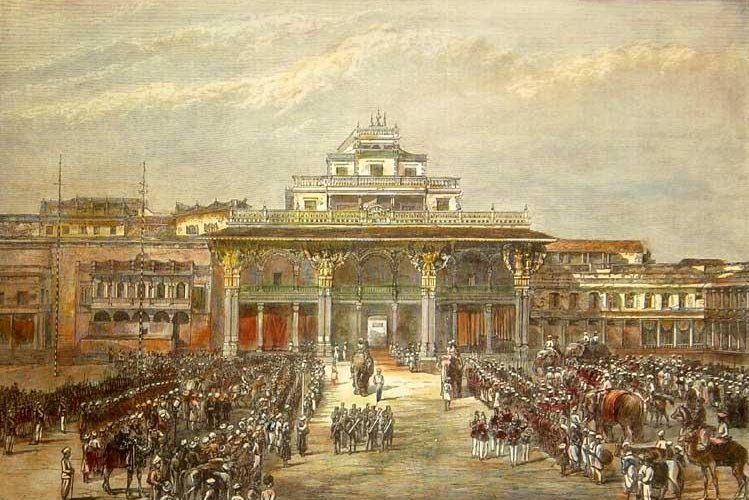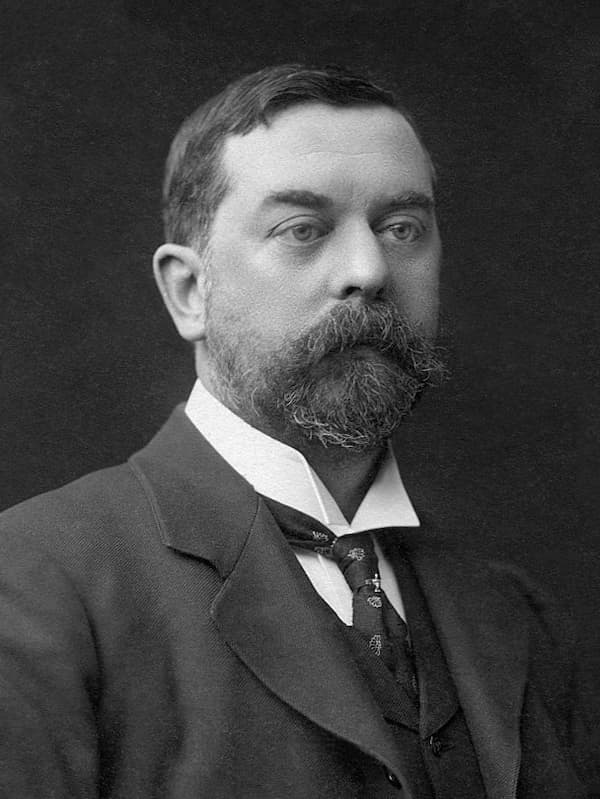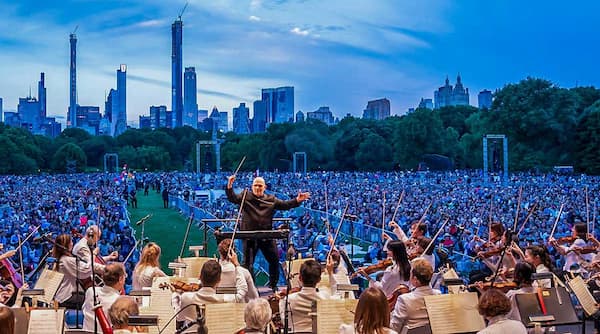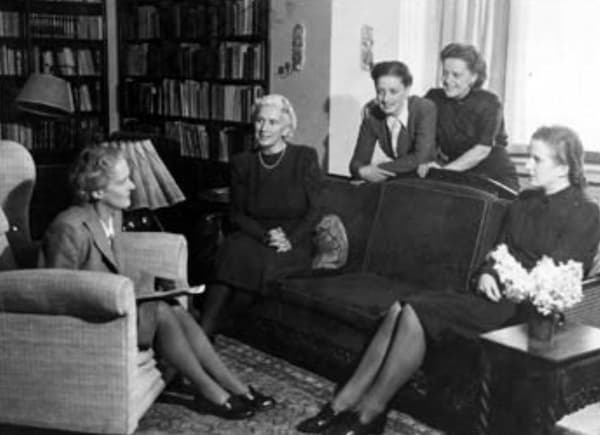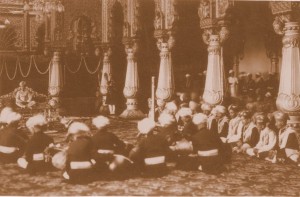
Concert at Mysore Palace.
Source: Wikimedia Commons
In order to come to an understanding of what happened and why it happened, quite a few “longstanding” legends have got to be discarded, one of which is the idea that the saxophone died out after 1870, only to re-emerge triumphant in the United States through the rise of Jazz during the late 1910s/1920.
I remember as a student buying a collection called “Les Classiques Favoris du Saxophone”, which was essentially the same thing as the well-known “Classiques Favoris” for the piano but transcribed for the saxophone. On the back cover of this volume, there was a montage of three figures: Adolphe Sax, in a 19th century engraving: Marcel Mule, who was the next teacher of saxophone at the Paris Conservatory (when the class reopened in 1942) and Daniel Deffayet, who was my own teacher there when I was a student in the 1980s. What this image seemed to be saying was, outside of these three gentlemen, nothing else really existed in the World of “serious saxophone”.
Ali Ben Sou Alle, the traveling pioneer of the saxophone, seems to have been forgotten for these same kinds of territorial and professional reasons. Adolphe Sax, the inventor of the saxophone and its first professor at the Paris Conservatory, could not have been very happy about the modifications that Soualle made to his invention, replacing the double octave mechanism with a single octave key.
The Paris Conservatory at that time was the home to serious music, and one did not bring certain pieces to lessons: I remember bringing in Jascha Gurewich’s Concerto, clearly modeled on Mendelssohn’s violin concerto, only to be told that “we did not play those sorts of things here”. The repertoire with which I toured the World for several decades (the works of Rudy Wiedoeft, and other early American saxophonists, ragtime composers and composers of Broadway songs), my “bread and butter” for years, was not imaginable in this setting. Instead, we played works in the established canon, most of which are not popular on concert programs (with a handful of exceptions, thankfully!).
When I recorded the Pierre Vellones Saxophone Concerto in the early 90s, I called up Marcel Mule, the teacher of Deffayet for whom the saxophone class had been recreated at the Paris Conservatory in 1942, (for whom the work was written in 1934) to ask him some questions. He wouldn’t say why he had stopped playing this evocative work and later when I asked him about the Tailleferre Concerto for two pianos, mixed chorus, saxophone quartet and orchestra (I produced the first recording of this work in 1997), there was also a great deal of hesitance to discuss this work on his part. It seemed as if there was an agenda to create “serious repertoire”, which went again the ongoing “popular” use of the instrument that people like Milhaud (“La Création du Monde”, the first version of “Scaramouche” for saxophone and orchestra), Honegger (in his film scores) and Tailleferre were interested in exploring. Fighting what would have been a natural and logical development of the instrument for professional or personal reasons seems to be a leitmotiv in the history of my instrument, which continues to this day.
Even his living relatives (who do not have any connections to music) seem mystified by this story, although they knew that their ancestor made a world tour. Various photographs remain, as well as a handwritten timeline established by Soualle himself of his concerts and travels. In a house in Italy where Soualle‘s granddaughter lived, there is also an oil portrait of Soualle wearing a turban. The turcophones have long been sold.
Ali Ben Sou Alle, the traveling pioneer of the saxophone, seems to have been forgotten for these same kinds of territorial and professional reasons. Adolphe Sax, the inventor of the saxophone and its first professor at the Paris Conservatory, could not have been very happy about the modifications that Soualle made to his invention, replacing the double octave mechanism with a single octave key. Soualle, with his “Turkish” clothing (which he wore onstage and off) and his “turcophone” were often objects of ridicule by Sax and his associates. The fact that Sax was occupied by other French instrument makers who were trying to sue him to get control of the military instrument markets under Napoléon the Third would seem to have occupied much of his later life, but he certainly could not have seen Soualle’s activities nor his great success in a positive light.
So, the agenda seems to be created to “erase” these outliers, these people who live outside of the established circles of power: Just as Marcel Mule made fun of Jules Viard (in an interview with Eugene Rousseau), the saxophonist at the “Moulin Rouge” who (according to Manuel Rosenthal) inspired Ravel to use the saxophone, it would appear that Ali Ben Sou Alle was completely forgotten in France, where he chose to live the last three decades of his life in relative obscurity. Even in press accounts published in the 1880s, he becomes a “clarinetist” instead of saxophone. Some of this may be by choice, as it would seem that he dropped his professional name in his later years, re-emerging as Monsieur Soualle” a married family man with children.
Even his living relatives (who do not have any connections to music) seem mystified by this story, although they knew that their ancestor made a world tour. Various photographs remain, as well as a handwritten timeline established by Soualle himself of his concerts and travels. In a house in Italy where Soualle‘s granddaughter lived, there is also an oil portrait of Soualle wearing a turban. The turcophones have long been sold.
But various clues remain. By grouping the known information, we seem to be coming to an understanding of the influence this man had, even on Indian Traditional Music.
It would appear that in the 1950s, Cr. Gopalnath heard the Palace band play at Mysore, he had his heart set on learning the saxophone. His father purchased a saxophone and engaged the Palace band’s saxophonist, Mr Lakshmi Narasimhaiah to give the lad his first lessons. Although it would seem that the use of the saxophone in Carnatic music is still a discussion among musicians, it seems that the presence of the saxophone in the Palace Band was key to this new current in Traditional Indian Music.
In the weeks since my last article about Ali Ben Sou Alle appeared, I have been approached by a number of people who provided clues as to various missing pieces of the puzzle which did not appear to fit into the general story. Of course, Raj Bhimani’s tour with Syrinx : XXII to India in November 2016 allowed us to confirm once and for all that Soualle did indeed spend time at the Maharaja’s Palace in Mysore, probably during the reign of Mummadi. This information was provided by Raja Chandra Urs, brother-in-law of the late Maharaja Srikantadatta Narasimharaja Wadiyar, who passed away about three years ago. Although the records indicate the English-style palace band was started under the reign of Chamaraja Wadiyar, it would also appear from the Memoirs of Lady Bowring that an English-style band was already present at the Coronation of Chamaraja Wadiyar in 1868. The creation of this Palace Band gave a platform for the Saxophone and appears to be one of the main reasons that this instrument has become usual in Carnatic music, through the work of Dr. Kadri Gopalnath, one of the pioneers of Carnatic music on the saxophone.
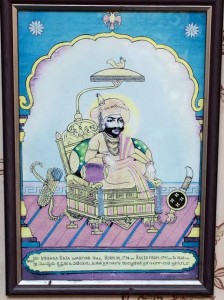 It would appear that in the 1950s, Cr. Gopalnath heard the Palace band play at Mysore, he had his heart set on learning the saxophone. His father purchased a saxophone and engaged the Palace band’s saxophonist, Mr Lakshmi Narasimhaiah to give the lad his first lessons. Although it would seem that the use of the saxophone in Carnatic music is still a discussion among musicians, it seems that the presence of the saxophone in the Palace Band was key to this new current in Traditional Indian Music. But another mystery remained: when was Soualle actually in Mysore and for how long was he in the employment of the Maharaja? Indeed, to have such a lasting impact, he would have had to had taught at least one student to take his place after he returned to France.
It would appear that in the 1950s, Cr. Gopalnath heard the Palace band play at Mysore, he had his heart set on learning the saxophone. His father purchased a saxophone and engaged the Palace band’s saxophonist, Mr Lakshmi Narasimhaiah to give the lad his first lessons. Although it would seem that the use of the saxophone in Carnatic music is still a discussion among musicians, it seems that the presence of the saxophone in the Palace Band was key to this new current in Traditional Indian Music. But another mystery remained: when was Soualle actually in Mysore and for how long was he in the employment of the Maharaja? Indeed, to have such a lasting impact, he would have had to had taught at least one student to take his place after he returned to France. Fabien Chouraki, a French saxophonist and scholar, provided me with various important pieces of information, including information about Soualle’s living family and a timeline of events, pieced together through a careful examination of press articles and other documents. And although this timeline has answered quite a few questions about the order of events, travel conditions during the mid 19th century make Soualle’s itinerary seem as if he was taking jets around the world, instead of ships! Of course, it also took information quite a bit more time to circulate than it does today, with reviews of concerts being printed sometimes weeks or even months after the concerts took place.
Soualle’s world travels appear to have begun in 1851. They must have been late in the year since he performed for Queen Victoria in October of 1851, when she presented him with the First Council Medal. During the course of his travels, he toured Australia, New Zealand, Tasmania, Manilla, Singapore, Java, Hong Kong, Canton, Macao, Shanghai, Calcutta, Madras, and Pondicherry. This is quite a long peril, but in addition to going to these places, he is also present in London, for example in November, 1854 where he is admitted to a Masonic Lodge and in 1855, where he performs at The Prince of Wales Theatre and The Royal Victoria Theatre.
According to Chouraki’s research, it would appear that Soualle was back in India in 1856, performing for Lord Harris, the Royal Governor at Madras. It was Harris who gave Soualle a letter of introduction to the Maharajah of Mysore, who hired him as his Palace Band Director for a salary of 1000 pounds sterling. However in 1857, Soualle appears to be traveling again, performing a benefit concert at Île Maurice in May, 1857 and receiving the Great Royal Order from the Governor of Pondicherry in July, 1857 and also visiting the Cape of Good Hope and Natal during this period. It would appear that the Indian Rebellion of 1857, in which Soualle was wounded and narrowly escaped being killed (the two broken ribs he received would have made playing a wind instrument very difficult) would appear to have ended his career as the Palace Band Director.
So, in the course of two years in which Soualle appears to have spend a great deal of time traveling, it would appear that he found time to teach at least one student who allowed the Palace Band to continue using saxophones after his departure in 1857 (probably to Île Maurice, as another correspondent there has suggested to Mr. Chouraki). This appears to be highly unlikely, and it would seem logical that he was perhaps in the Maharaja’s employ for a longer period, taking frequent leaves of absence in order to travel. And with the new Maharaja mounting the throne in 1868, (the 5-year-old Chamaraja Wadiyar, under the care of his British Guardians), it might be that there was a “changing of the guard” in the Palace band as well. Who were the Indian Musicians who served as the saxophonists of the Palace band when Soualle left Mysore? I’m now curious to know more about these people!
In the meantime, I recently received an email from an American scholar, who is currently in China doing research on performance practice of the Saxophone in 19th century China. And once again, our friend Ali Ben Sou Alle seems to have set this other tradition in motion, being the first person to perform on the saxophone in China. It would appear that this string upon which I have pulled seems to have far more implications than I could have imagined. So, it appears, the story will continue.
By Paul Wehage
This Article first appeared on Serenade Magazine on July 30, 2017.

